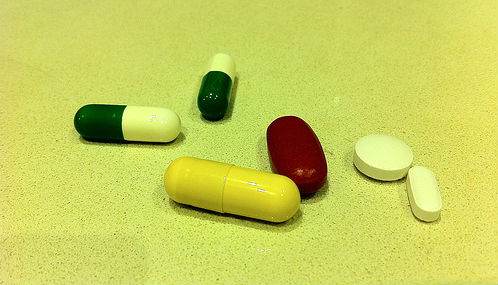Sickle cell anemia is a chronic disease that can be managed effectively. Sickle cell anemia complications mainly crop up due to sickle shaped red blood cells in the affected individuals, which disrupts the flow of blood to vital parts of the body. Through sickle cell anemia treatment measures, any crisis associated with the disease can be dealt with and further complications can be prevented.

The Most Effective Sickle Cell Anemia Treatment Measures
Individuals who have sickle cell anemia should undergo a regular blood test for effective sickle cell anemia diagnosis, for doctors to monitor their complete blood count. There are different types of sickle cell anemia treatment options available, and these are as follows.
-
Pain-Relieving Medication
In order to treat the constant pain that sickle cell anemia patients experience, strong pain medication is prescribed on a regular basis. Applying heat to the area that is causing pain is also advised for immediate relief.
-
The Use Of Antibiotics
Repeated lung infections are very common among young children who suffer from sickle cell anemia. Because of this, they are administered penicillin from the age of 2 months till they are 5 years old.
This is used as a preventive measure against infections that could otherwise lead to acute chest syndrome and its related complications. Antibiotics are commonly used to treat such infections in adults.
-
Hydroxyurea Treatment
Hydroxyurea is a chemotherapy agent with potent effects on the bone marrow. This substance is used to bring down the pain in individuals with sickle cell anemia. This mode of treatment can also reduce the number of times a blood transfusion is required.
Hydroxyurea treatment is more commonly prescribed for adults, and in some cases, this treatment is used in newborn children to stimulate the fetal hemoglobin, in order to prevent the formation of sickle shaped red blood cells. However, there are several side effects associated with Hydroxyurea treatment. Studies have shown that the repeated use of Hydroxyurea can cause cancerous tumor in some individuals.
-
Immunization Against Infections
Young children who suffer from this condition are more prone to infections, and these can be prevented and managed by regular immunization. The common vaccines used for this purpose are haemophilus influenza, pneumococcal conjugate, and pneumococcal polysaccharide.
-
Blood Transfusions
Red blood cells that are sickle shaped are trapped in the spleen during circulation, and this causes the red blood cell count in the body to drop. This in turn causes anemia in patients.
In order to overcome such anemia, frequent blood transfusions are required. However, repeated blood transfusions can spiked up the iron content in the blood, further damaging organs like the liver and the heart. In order to reduce the iron levels, an oral medication called deferasirox is prescribed during sickle cell anemia treatment.
-
Oxygen Supplements
People who suffer from acute chest syndrome due to sickle cell anemia are likely to face difficulty breathing. In such cases, additional oxygen is usually supplied through a mask, to ease the process of breathing.
-
Nitric Oxide Supplements
This form of sickle cell anemia treatment is designed to counter the low concentration of nitric oxide in the blood of affected individuals. Nitric oxide gas is supplied through a mask in this mode of treatment, and aids in opening the blood vessels up for better blood flow. It also prevents the red blood cells from sticking to each other and blocking the blood vessels.
-
Bone Marrow Transplants
The only available cure for sickle cell anemia is a bone marrow transplant.
The bone marrow in an individual with sickle cell anemia is first washed out using chemotherapy. Healthy bone marrow cells from a healthy individual are introduced into the blood stream of the individual with sickle cell anemia.
These cells travel to the bone marrow cavity, where they start producing normal red blood cells. However, there is small risk involved in this type of sickle cell anemia treatment. In some cases, the body might reject the fresh bone marrow that’s been transplanted.
-
Gene Therapy
Several studies are being conducted worldwide to explore the possibility of inserting a normal gene into the affected individual’s genome.
This form of sickle cell anemia treatment helps in producing normal red blood cells. Researchers are also trying to negate the function of the defective gene and activate the gene that helps in producing fetal hemoglobin, which is usually found to active in the first year of life. This would in turn prevent the formation of sickle cell red blood cells.
By taking adequate steps to prevent the disorder or by adopting appropriate sickle cell anemia treatment measures, you can avoid the complications that the disease brings and its implications. It is important to identify the primary sickle cell anemia symptoms for timely diagnosis and treatment.
